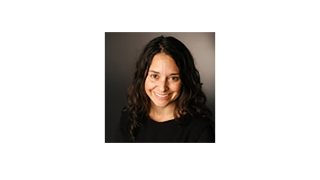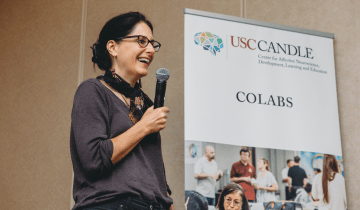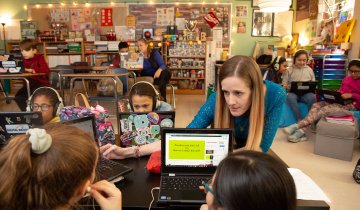There is concern among some educators about how the implementation of Common Core State Standards (CCSS) will affect English Learner (EL) students.
EL students have the dual task of mastering content and developing language proficiency, and historically, schools have not done a very good job of supporting them in this endeavor. The new standards’ emphasis on complex academic language across content areas presents even greater challenges for schools to ensure that EL students receive the instruction they need to be academically successful.
"At USC Rossier, we try to prepare teachers to teach in ways that are responsive to the different needs and experiences of students."
One charter school near the California/Mexico border, however, may shed light on how educators can implement CCSS while promoting the academic success of EL students.
With funding from the Spencer Foundation, USC Rossier Assistant Professor Jamy Stillman and colleagues are conducting a detailed case study of the school as it rolls out the new standards to provide a counter narrative to the sometimes rigid implementation approaches that have been advanced by some policymakers and districts.
The school boasts impressive achievement levels among a student demographic that is traditionally underserved and often deemed “underperforming.” Its students – 96 percent Latino; 58 percent Spanish-speaking ELs; and 55 percent qualifying for free or reduced-price lunch – recently earned an impressive Academic Performance Index (API) score of 878. The API is a measurement of academic performance and progress of individual schools in California.
Stillman, along with Co-PI Lauren Anderson of Connecticut College and doctoral students Kathryn Struthers, John Beltramo and Joyce Gomez, are exploring connections among standards-based policies, school conditions, and teachers’ instructional practices in the school, where students are expected to master both English and Spanish in a dual immersion program from grades pre-K to high school graduation.
“They developed their own academic program where the teachers were engaged in the creation of the entire curriculum, and they turned it around on their own,” Stillman said.
Since December 2012, Stillman and colleagues have been engaging in an ethnographic case study of the school, focusing on 10 teachers in three different grade levels through individual interviews, including stimulated recall interviews, focus group interviews, and extensive observations of classroom instruction and meetings with parents, teachers and administrators.
At this early stage of analysis, Stillman said that there are three general features of the school that appear to be supporting its approach to CCSS implementation. These include: strong school leadership; teachers’ active participation in a robust professional learning community; and the school’s contextually-sensitive approach to standards implementation, which engages teachers in the sense-making process.
Stillman noted that the conditions teachers at this school seem to be experiencing are sometimes not the norm. “When teachers – particularly those serving English Learners, students of color and students from poverty – are involved and can take ownership of this process, and when they are supported in their professionalism and continual improvement, great things can happen for their students.
“At USC Rossier, we try to prepare teachers to teach in ways that are responsive to the different needs and experiences of students, to be mindful of the resources that different students bring and to leverage those for learning,” Stillman said.
The researchers hope that the findings, expected by mid-2014, will illuminate some of the ways that school conditions, school leadership and teacher practices can make CCSS implementation work to the advantage of EL students.
This article was featured in the December, 2013 Issue of Rossier Reach




